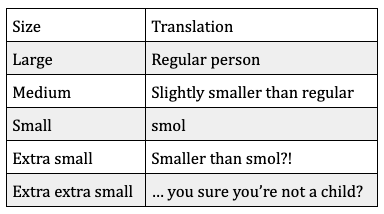
If your default is extra small, this post is for you.
Before we begin, let me be clear: This is not a buyer’s guide. If you’ve never bought a gi before or buying one after a long time, I highly recommend doing a Google search and reading the top handful of results that show up before continuing with this post. I will not be going over general best practices – this post is meant to be an addendum to those guides.
Finished? Great.
Some background: As of this writing, it’s been 10 years since my first BJJ class and since then, I’ve gone through dozens of gis. Not hundreds, as I’m not swimming in money and also because I’ve learned a couple things so I’m not swimming in my gis.
This post is a collection of those learnings, a handful of practical tips that have saved me both money and frustration – because let’s face it, BJJ is hard enough without your gi working against you.
This post will consist of two parts: Getting a gi that fits, and extra money saving tips.